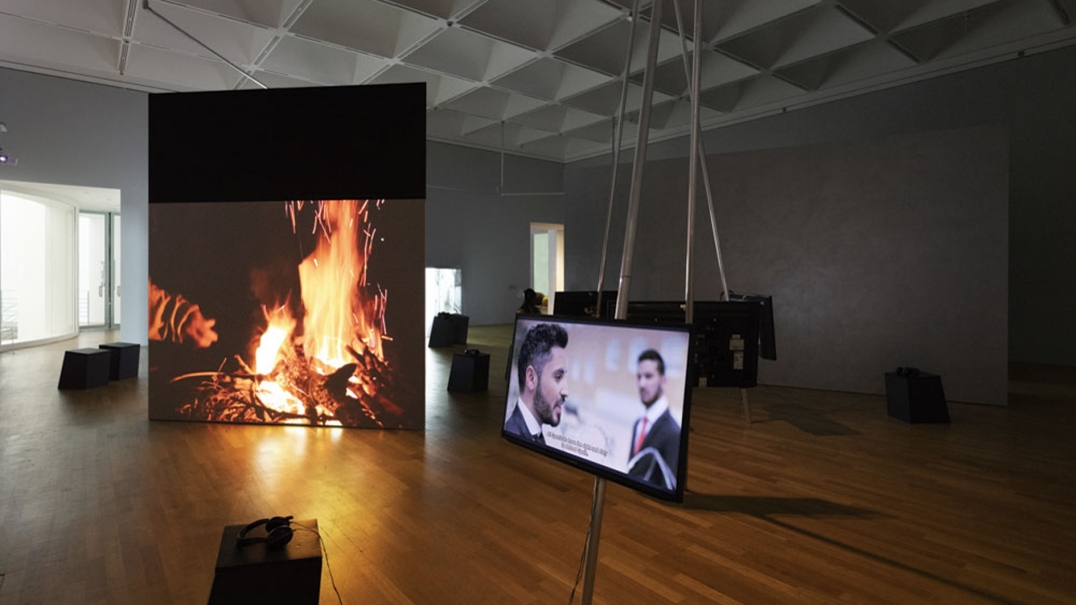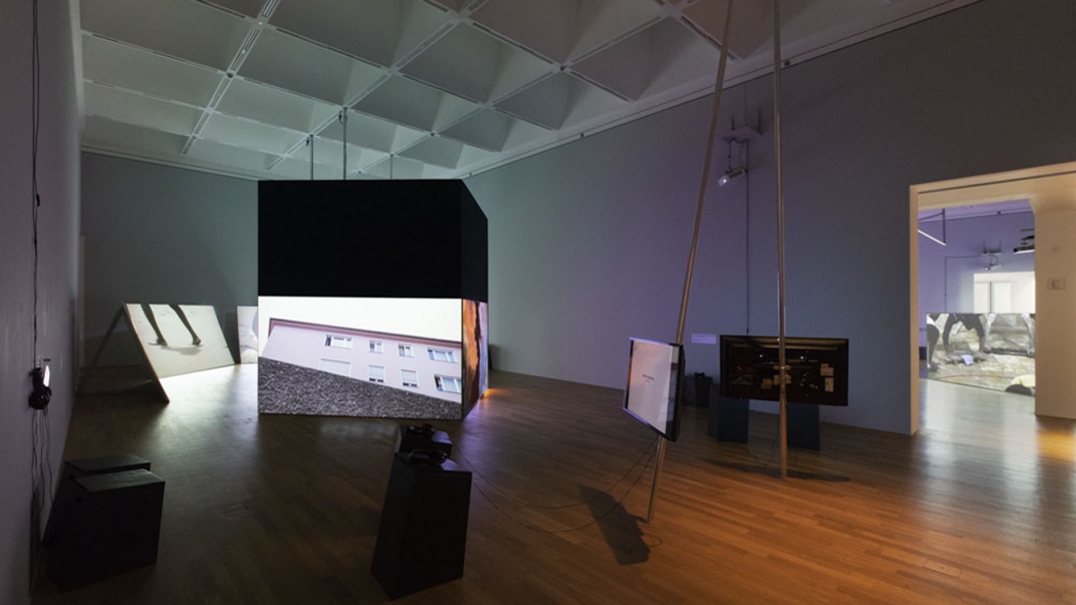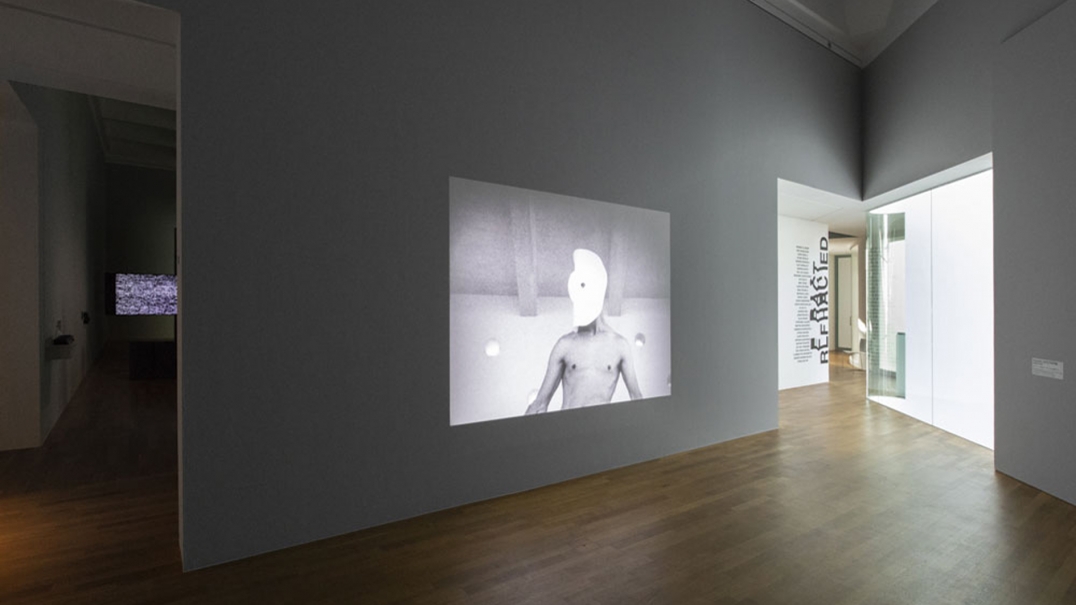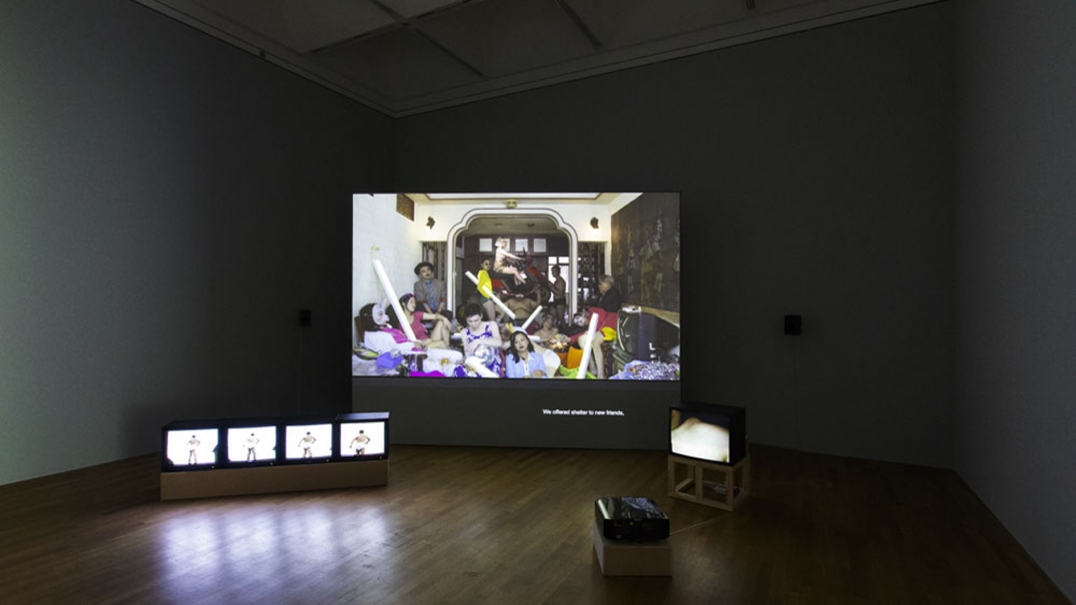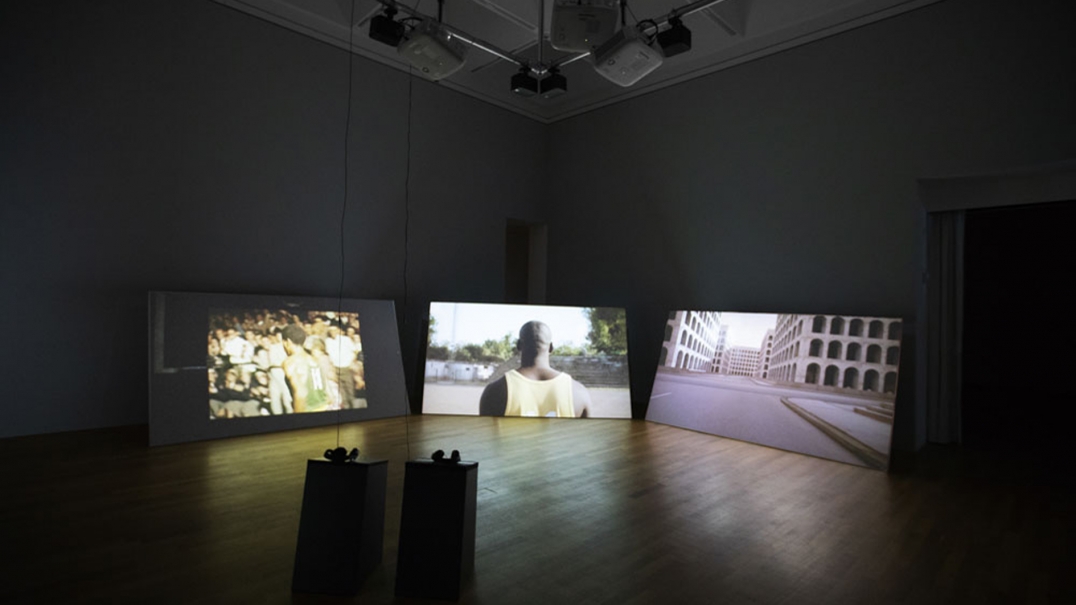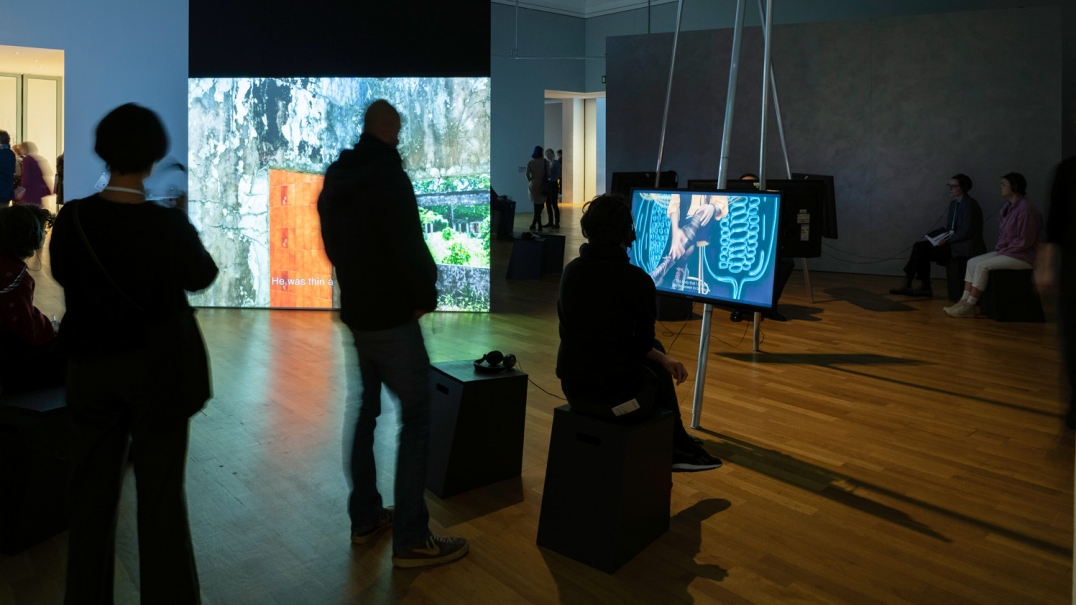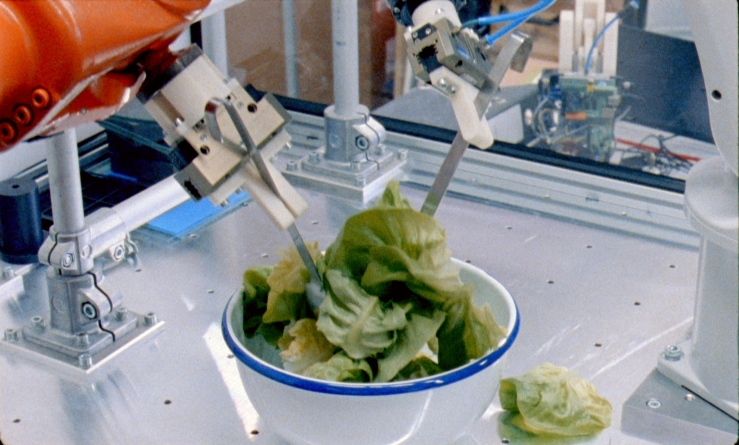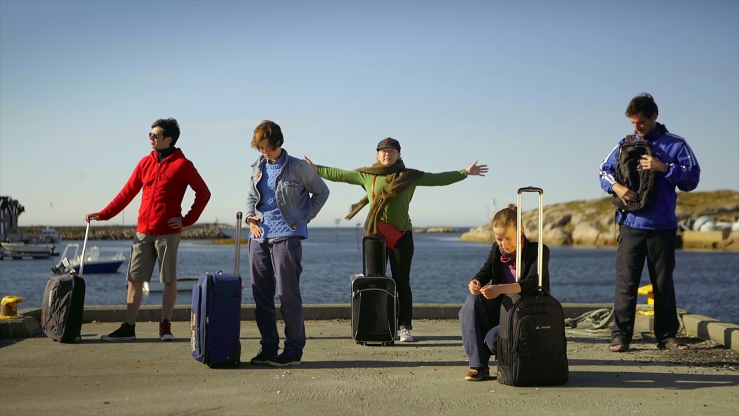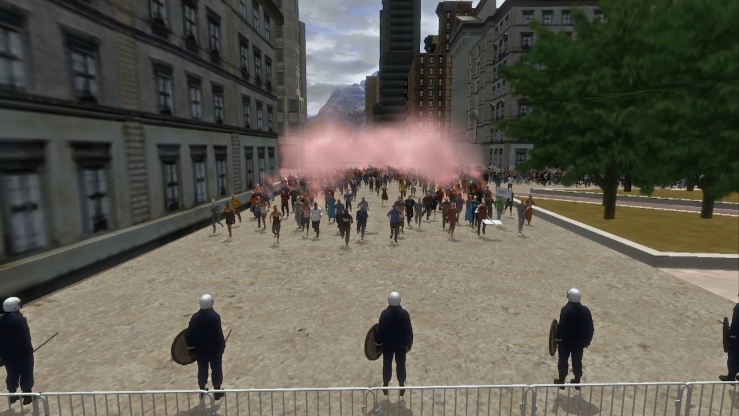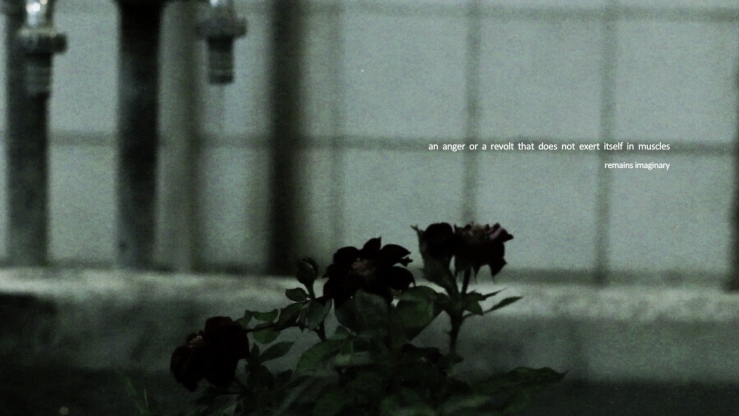VIDEONALE.17
As the philosopher Raymond Tallis affirms in Johan Grimonprez’ Raymond Tallis: On Tickling (2017), “We dialogue, therefore we are.” The video is one of 29 works by contemporary international artists selected for VIDEONALE.17 – Festival for Video and Time-Based Arts, which were shown at Kunstmuseum Bonn.
Tallis’ words play on René Descartes’ famous dictum, “I think, therefore I am.” But they also raise a number of crucial questions explored in the exhibition, such as: How do we dialogue with one another today? Who speaks to whom and through which media? What reality (or realities) do we speak about and how do I recognize the reality of my interlocutor? And what artistic strategies are currently being developed to create alternative points of view, and to integrate new perspectives?
Selected from over 1,100 entries from 66 countries, the works featured in VIDEONALE.17 address such questions in line with the festival theme of REFRACTED REALITIES.
In optics, “refraction” refers to the bending of a beam of light, a change in direction which occurs at the moment when it passes from one medium to another. Through refraction, the light wave alters course, changing the way we perceive the objects it illuminates in the process. This optical deviation requires us to repeatedly correct our gaze, comparing the beginning and end points of our perception with reality, and bringing the object we see clearly into focus.
In its figurative sense, refraction refers to a critical reflection on the means and channels of visualization, and by extension the possibility of a rearticulation of our view of things – how they are, were, or apparently always have been. The technical medium of the camera lens, which frequently mediates between us and the things we perceive, plays a central role here, since it significantly influences the degree of refraction. It can act to concentrate light waves in a single direction, or to deflect and realign them. It can provide new images for old narratives, or create new narratives with new images.
What possibilities exist to allow media in general, and artistic media in particular, to engage critically with their own dominance? What artistic strategies are currently being developed to create alternative points of view, and to integrate new perspectives? Which visual languages are available to the artist? And how can we use these languages to enter into dialogue again and discuss how we see things, saw them or apparently always have seen them?
“Visibility is not transparency. Rather (…) visibility is itself a claim that must be carefully examined: in acknowledging what is seen, and newly seen, we need to be equally vigilant about what is not seen, or no longer seen.”[1]
VIDEONALE.17 Artists
Monira Al Qadiri, Eric Baudelaire, Zanny Begg & Oliver Ressler, Mareike Bernien & Alex Gerbaulet, Andreas Bunte, Shu Lea Cheang, Marianna Christofides, Chto Delat, Mike Crane, Saara Ekström, Nina Fischer & Maroan el Sani, Mahdi Fleifel, Johan Grimonprez, Laura Huertas Millán, Su Hui-Yu, Sohrab Hura, Adam Kaplan & Gilad Baram, Stéphanie Lagarde, Maryna Makarenko, Deimantas Narkevičius, Stefan Panhans, Laure Prouvost, Morgan Quaintance, Maryam Tafakory, Eva van Tongeren, Tris Vonna-Michell, Clemens von Wedemeyer, Andrew Norman Wilson, Tobias Zielony
Competition Jury
Eli Cortiñas (artist), João Laia (independent curator and writer), Tasja Langenbach (artistic director Videonale), Matteo Lucchetti (independent curator and co-director "Visible Project", Cittadellarte-Fondazione Pistoletto, Fondazione Zegna), Vanina Saracino (independent curator), Lesley Taker (producer/curator FACT Liverpool)
Award Jury
Inke Arns (director of the hartware medienkunstverein Dortmund), Prof. Dr. Stephan Berg (director of the Kunstmuseum Bonn), Nikola Dietrich (director of Kölnischer Kunstverein), Marcel Schwierin (director of Edith-Russ-Haus in Oldenburg)
Artistic director
Tasja Langenbach
Festival website
v17.videonale.org
Bibliography:
[1] Paula A. Treichler, Lisa Cartwright, Constance Penley, “Introduction: Paradoxes of Visibility.” In: Treichler, Cartwright and Penley (eds.), The Visible Woman. Imaging Technologies, Gender, and Science. New York and London 1998, p. 3.
Images:
VIDEONALE.17 catalogue cover, 2019. © Videonale
VIDEONALE.17 opening, 2019, Kunstmuseum Bonn. © Videonale / Photo: David Ertl
VIDEONALE.17 exhibition views, 2019, Kunstmuseum Bonn. © Videonale / Photo: Anneke Dunkhase
About the VIDEONALE.17
1136 submissions (from 66 countries)
29 selected works (from 20 countries)
Duration February 21–April 14, 2019
Opening February 20, 2019
Location Kunstmuseum Bonn
Artists Monira Al Qadiri, Eric Baudelaire, Zanny Begg & Oliver Ressler, Mareike Bernien & Alex Gerbaulet, Andreas Bunte, Shu Lea Cheang, Marianna Christofides, Chto Delat, Mike Crane, Saara Ekström, Nina Fischer & Maroan el Sani, Mahdi Fleifel, Johan Grimonprez, Laura Huertas Millán, Su Hui-Yu, Sohrab Hura, Adam Kaplan & Gilad Baram, Stéphanie Lagarde, Maryna Makarenko, Deimantas Narkevičius, Stefan Panhans, Laure Prouvost, Morgan Quaintance, Maryam Tafakory, Eva van Tongeren, Tris Vonna-Michell, Clemens von Wedemeyer, Andrew Norman Wilson, Tobias Zielony
Videonale Award of the fluentum collection
Sohrab Hura for "The Lost Head & The Bird: ACT 1 to 12"
Special mention
Stefan Panhans for "HOSTEL"

